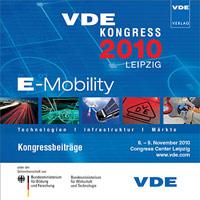Hydrogen Energy Supply and Infrastructure - From Renewable Primary Energies to Grid Stabilisation and Fuel
Conference: VDE-Kongress 2010 - E-Mobility: Technologien - Infrastruktur - Märkte
11/08/2010 - 11/09/2010 at Leipzig, Deutschland
Proceedings: VDE-Kongress 2010
Pages: 7Language: englishTyp: PDF
Personal VDE Members are entitled to a 10% discount on this title
Authors:
Toepler, J.; Wurster, R. (German Hydrogen and Fuel Cells Association, DWV, Berlin, Germany)
Wurster, R. (Ludwig-Bölkow-Systemtechnik, LBST, Munich, Germany)
Abstract:
The future of energy supply will be dominated by renewable primary energy sources. The limitation in fossil energy resources and their increasing damaging effects on climate change and the environment will not permit any other solution. Transport and distribution of energy gradually will be taken over by electrical grids. The intermittent supply of renewable energies as well as their very limited storage capability require a secondary energy carrier, which can be stored, which can compensate fluctuations in primary energy supply and which can be used as fuel for mobile application. For balancing longer-term fluctuations in the electrical grid (several days) storage media with high energy density are indispensible. The highest densities only can be achieved with hydrogen. Battery storage systems have the highest efficiency for the use of renewable electricity in mobile applications. But the applicability is restricted by the small energy density yielding only limited ranges. With hydrogen - mainly produced during off-peak times by a surplus of electricity - high energy storage densities can be achieved. In combination with fuel cells ranges of more than 400 km are realised already today. Additionally batteries are applied for braking energy recovery, that battery and fuel cell vehicles consequently are not in competition but rather are complementary.


